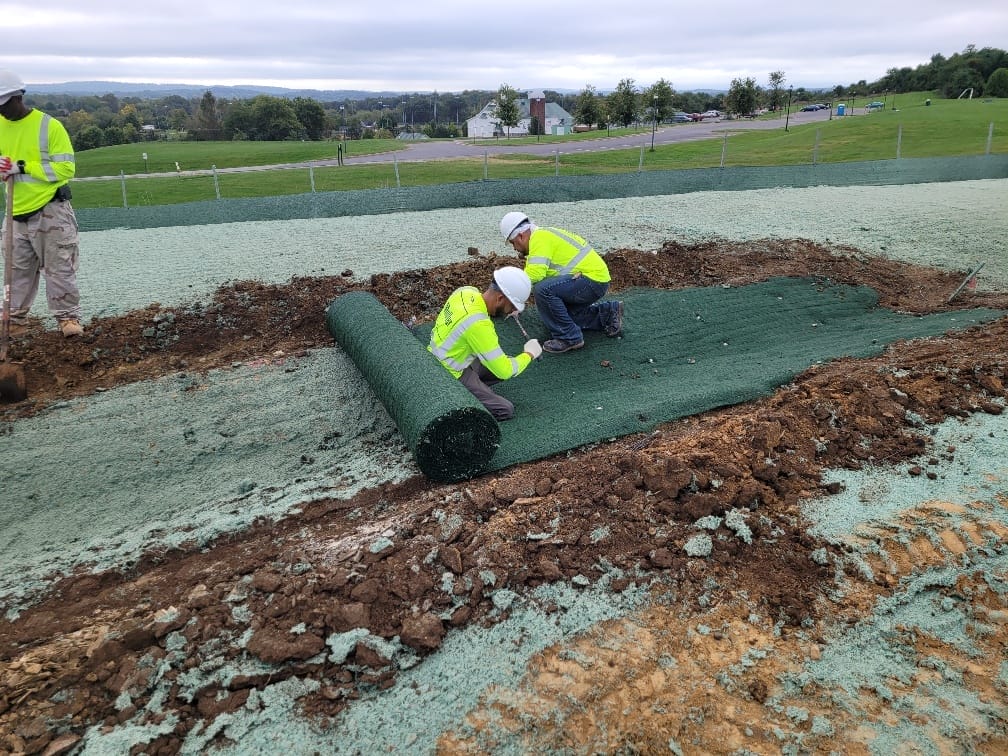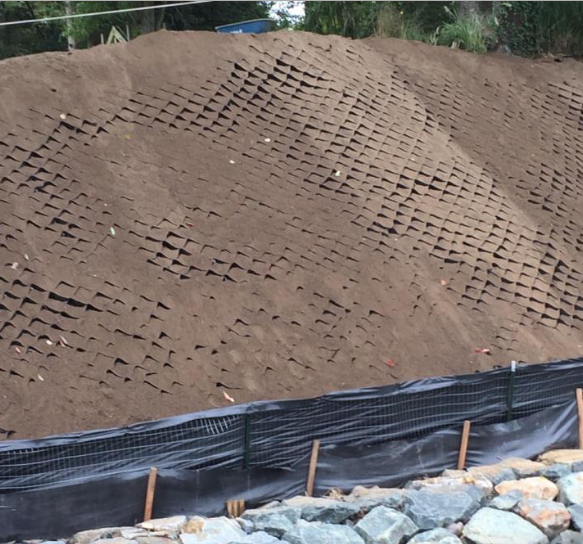Hydroseeding Solutions: A Greener Method to Land Management
Wiki Article
Ideal Practices for Erosion Control in Building And Construction Projects
Are you working on a construction task and worried regarding erosion control? In this write-up, we will guide you via the best techniques for stopping erosion on your website. Memphis Erosion Control Solutions erosion control company. Get all set to tackle disintegration head-on and guarantee the success of your building and construction job.5 Essential Disintegration Control Techniques

To efficiently control disintegration on your building and construction site, you'll need to execute important methods such as slope stabilization and debris control steps. Slope stablizing is crucial in preventing dirt disintegration on steep inclines. An additional efficient technique is the usage of disintegration control blankets or floor coverings, which are put on the slope and aid preserve soil particles while permitting plants to grow.
Reliable Sediment and Drainage Administration

You can effectively handle debris and overflow in your building and construction job by applying proper erosion control actions. Another essential technique is the implementation of erosion control coverings or floor coverings. By executing these disintegration control actions, you can effectively handle debris and overflow in your building task, lessening the effect on the atmosphere and abiding with regulatory demands.
Trick Considerations for Slope Stabilization
When taking into consideration incline stablizing, it is essential to examine the surface and recognize possible locations of instability. You require to carefully analyze the slope's attributes, such as its composition, angle, and water drainage patterns. Look for indicators of disintegration, such as subjected origins, fractures, or slumping soil. These indicators can give you a concept of where stablizing actions might be needed.One more option is to plant vegetation on the incline, as the roots can aid secure the soil and control erosion. Additionally, mounting erosion control blankets or floor coverings can give immediate defense while plants becomes well established.
It's important to routinely keep an eye on the stabilized slopes to guarantee their performance. Keep an eye out for any type of indicators of movement or disintegration, and take prompt action if required. Routine upkeep, such as examining and fixing any kind of damaged procedures, is additionally necessary to make certain long-term security.
Best Practices for Greenery and Dirt Defense
One effective way to shield vegetation and soil on inclines is by routinely inspecting for signs of erosion moved here and taking instant activity if essential. By being aggressive and watchful, you can stop more damages and make certain the security of the incline. Begin by checking the slope for any type of indications of erosion, such as exposed roots, bare dirt spots, or debris build-up near the bottom. If you observe any of these signs, it is vital to attend to the problem immediately. Implement disintegration control steps such as mounting disintegration control coverings, mulching, or even constructing retaining wall surfaces if required. Furthermore, planting plant life can dramatically assist in stabilizing the dirt. Select native plants that have deep origin systems, as they are a lot more effective in preventing disintegration. Make certain to routinely assess the wellness of the plants and offer required upkeep, like watering and fertilizing. Bear in mind, disintegration can quickly get worse and trigger severe damages, so it's vital to address it as quickly as possible. By taking aggressive actions and consistently keeping track of the slope, you can protect the plant life and soil, ensuring the lasting stability of the location.Implementing Correct Water Drainage Solutions
To efficiently apply proper drainage systems, it's vital to take into consideration the incline gradient and soil type. When it involves handling water flow and stopping erosion, understanding these factors is essential. The slope gradient plays a significant role in identifying exactly how water moves across the land. Steeper slopes can lead to faster water flow, increasing the risk of erosion and flooding. On the various other hand, gentler inclines permit water to stream a lot more gradually, minimizing disintegration capacity. By evaluating the slope gradient, you can develop an efficient drain system that fits the natural water motion.Sandy soils often tend to drain faster due to their coarse structure, while clay soils have a slower water drainage rate due to their small nature. Additionally, thinking about the soil attributes assists prevent waterlogging, which can lead to bad plant development and damage to frameworks.
Final Thought
In verdict, when it comes to disintegration control in building and construction tasks, you need to follow these best methods. special info Consider slope stabilization techniques to make certain the security of the website. By following these important practices, you can properly manage erosion and make certain the success of your building and construction job.To efficiently control disintegration on your building site, you'll need to execute vital methods such as slope stabilization and debris control measures. Slope stablizing is critical in preventing soil erosion on steep inclines. An additional reliable strategy is the usage of erosion control blankets or mats, which are placed on the incline and aid preserve soil fragments while permitting plants to grow. navigate to this site One more option is to grow vegetation on the incline, as the roots can aid anchor the dirt and control erosion. Implement disintegration control steps such as mounting erosion control coverings, mulching, or even creating maintaining wall surfaces if needed.
Report this wiki page